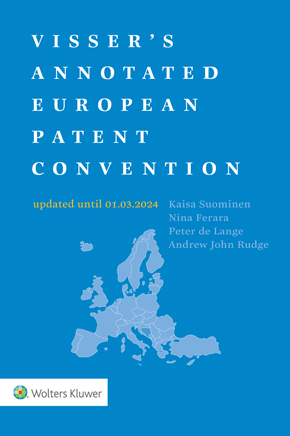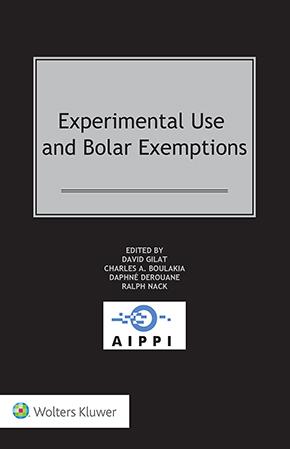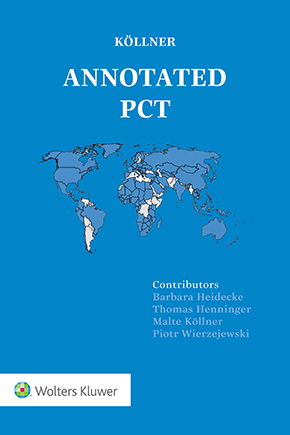The CJEU in Teva-Gilead: a word of warning for UPC seafarers?
November 26, 2018
In its judgment of 25 July 2018 (Case C-121/17 Teva v. Gilead), the CJEU had its latest say on the interpretation of article 3 (a) of Regulation (EC) 469/2009 concerning the Supplemental Protection Certificates for medicinal products (the "SPC Regulation"). In particular, it concluded that article 3 (a):
"[…] must be interpreted as meaning that a product composed of several active ingredients with a combined effect is "protected by a basic patent in force" within the meaning of that provision where, even if the combination of active ingredients of which that product is composed is not expressly mentioned in the claims of the basic patent, those claims relate necessarily and specifically to that combination. For that purpose, from the point of view of a person skilled in the art and on the basis of the prior art at the filing date or priority date of the basic patent: the combination of those active ingredients must necessarily, in the light of the description and drawings of that patent, fall under the invention covered by that patent, and each of those active ingredients must be specifically identifiable, in light of all the information disclosed by that patent."
To date, this judgment has been praised for having provided some clarity and a somewhat more balanced test than the obscure tests applied by the CJEU since Medeva (Case C-322/10). In addition, although the question answered by the CJEU dealt with article 3 (a), its legal grounds may also be applied to interpret article 3 (c), as shown by the judgment of 12 March 2015 (Case C-577/13 Actavis v. Boehringer Ingelheim), where the CJEU gave a joint answer to a similar question dealing with both article 3 (a) and (c). One may add that the fact that the judgment of 25 July 2018 has come from the Grand Chamber may mean that this new test might be here to stay.
But an aspect of this important judgment that to date does not seem to have caught the attention of SPC aficionados is the CJEU's eagerness to venture into the interpretation of the substantive provisions of the European Patent Convention ("EPC"). This is clearly illustrated by paragraphs 35 and 46-48, where the CJEU has for the first time not resisted the temptation to venture into the interpretation of the provisions of the EPC:
"35. So far as, specifically, the European patent is concerned, pursuant to Article 69 of the EPC, the extent of the protection conferred by such a patent is determined by the claims. The information in Article 1 of the Protocol on the Interpretation of Article 69 of the EPC states that those claims must ensure both a fair protection for the patent proprietor and a reasonable degree of legal certainty for third parties. Thus, they are not to serve only as a guideline, nor can they be interpreted as meaning that the extent of the protection conferred by a patent is that defined by the narrow, literal meaning of the wording used in the claims."
In addition, at paragraphs 46-48, the CJEU made further inroads into a land that one would have expected to be the preserve of national Courts:
"46. It follows from the above that the subject matter of the protection conferred by an SPC must be restricted to the technical specifications of the invention covered by the basic patent, such as claimed in that patent.
47. With regard to the implementation of that rule, it must in the first place be stated that, in accordance with a principle shared by the patent laws of the Member States and reflected in Article 1 of the Protocol on the Interpretation of Article 69 of the EPC, the claims of a patent are to be interpreted from the perspective of a person skilled in the art and, therefore, the issue whether the product which is the subject of the SPC necessarily falls under the invention covered by that patent must be assessed from that perspective.
48. To that end, it is necessary to ascertain whether a person skilled in the art can understand without any doubt, on the basis of their general knowledge and in the light of the description and drawings of the invention in the basic patent, that the product to which the claims of the basic patent relate is a specification required for the solution of the technical problem disclosed by that patent."
The CJEU's new appetite for consuming EPC law is a rather bold move, particularly bearing in mind that in the past it had flagged its lack of competence to interpret the provisions of the EPC. For example, in its judgment of 12 December 2013 (Case C-493/12 Elli Lilly v. HGS) the CJEU highlighted the following:
"40. With regard to the requirements laid down by the EPC, it should, however, be noted that the Court does not have jurisdiction to interpret the provisions of that convention, since, unlike the Member States, the European Union has not acceded to the convention. The Court cannot, therefore, provide further guidance to the referring court concerning the manner in which it is to determine the extent of the claims of a patent issued by the EPO."
Certainly, the move in judgment of 25 July 2018 will disappoint those who pushed for the removal of substantive patent law from the text of Regulation 1257/2012 implementing enhanced cooperation in the area of the creation of unitary patent protection, hoping that this trick would prevent the CJEU from interpreting substantive patent law. From this perspective, the recent Teva v. Gilead decision may be interpreted as a word of warning for Unified Patent Court ("UPC") seafarers.
You may also like















Concerned observer
Miguel, whether or not the CJEU has attempted to interpret a provision of non-EU law, the fact remains that the CJEU is not competent to do so. It is simply outside of their jurisdiction. What this means for the UPC is hard to say, not least because there are good reasons to believe that the Unitary Patent Package is not compatible with EU law. However, the implications for SPCs are far more interesting. This is because it is hard not to conclude that, by indicating how protection under Article 69 EPC is to be interpreted, the CJEU has overstepped its remit.
Attentive Observer
For all those who might have hoped that the CJEU would keep outside interpretation of the EPC, this decision is a clear warning. One can only agree in this respect with Mr Montana. That this might have an influence on the UPC, should it ever come, is a clear possibility. That the CJEU might have oversteped its competence is one thing. But even if it continues to do so, what are the means of redress? The ECHR? Probably not, but where then? It is interesting to note as well that the CJEU only referred to Art 1 of the Protocol on Art 69. It carefully avoided talking about the famous Art 2, which led to a series of decisions on equivalence which have as well shaken the profession. May be the CJEU was wise enough to realise that Art 2 speaks about equivalents, but without definition of those to be found in the protocol. A proposal was made by the EPO, but was not adopted by the Diplomatic Conference in 2000, so that we have now equivalents in the protocol, but we do not know what those entail. The question is nevertheless interesting: would the CJEU consider that since due to equivalence, a SPC covering pemetrexed disodium + vitamin B 12 would also cover any pemetrexed ion + vitamin B 12? I would guess that in view of this judgement, but also previous ones in SPC matters, the answer might be negative. I am looking forward to replies on this point.
Nodding
The CJEU did not interpret the EPC. They just quoted from Article 69 and then said how Article 3(a) should be applied.